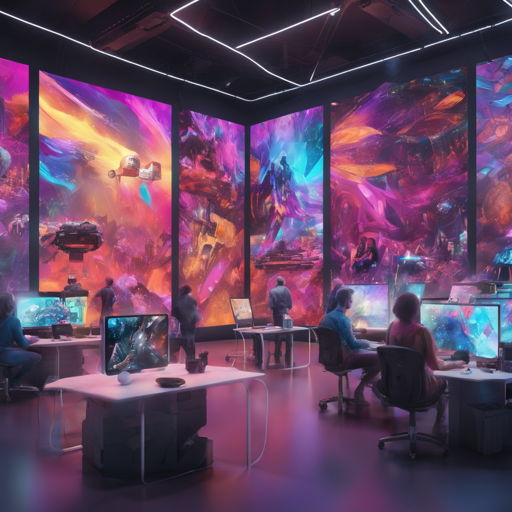Welcome to the Stable Diffusion Playground! This repository allows you to generate fascinating images while ensuring reproducibility, so you’ll know exactly how you created each piece. Here’s how you can set everything up and start your creative journey.
Getting Started with the Setup
Follow these simple steps to run the Stable Diffusion Playground code:
- Clone the repository using Git:
git clone https://github.com/gordicaleksa/stable_diffusion_playground - Open your Anaconda console and navigate to the project directory. For example:
cd path_to_repo - Create a new conda environment:
conda env create - Activate the environment:
activate sd_playground - Log in to Hugging Face CLI to access model weights:
huggingface-cli login
That’s it! The environment should be ready to use, executing the environment.yml file which manages dependencies automatically.
Important Note
You need to make a local patch in the pipeline_stable_diffusion.py file from the diffusers library (version 0.2.4). You can find the necessary code here.
Using the Code
Once everything is set up, you can run the scripts using an IDE or directly from the command line. The Fire package simplifies argument handling:
python generate_images.py --arg_name arg_valueUnderstanding Script Arguments
Here are some key parameters you’ll utilize:
output_dir_name: Folder for images, latents, and metadata storage.prompt,guidance_scale,seed,num_inference_steps: Key parameters for controlling image generation.
Execution Modes
The script has three execution modes:
1. GENERATE_DIVERSE Mode
Set execution_mode = ExecutionMode.GENERATE_DIVERSE. This mode generates a diverse set of images based on your settings. Expect outputs like:


2. INTERPOLATE Mode
Set execution_mode = INTERPOLATE. You can generate images by selecting two existing images to interpolate between them or let the system create random images on the fly. The result is a smooth transition between two visuals:

3. REPRODUCE Mode
Set execution_mode = REPRODUCE. This mode is perfect for debugging. Specify src_latent_path and metadata_path, allowing the script to reconstruct original images based on saved metadata:
Hardware Requirements
You will need a GPU with at least 8 GB of VRAM to run at 512×512 resolution in float16 precision. For float32 precision, a GPU with ~16 GB of VRAM is necessary unless you compromise on resolution.
Troubleshooting
If you encounter issues during the setup or execution, here are some troubleshooting ideas:
- Ensure you have a compatible GPU and the necessary drivers installed.
- Double-check your cloned repository for any missing or corrupted files.
- If the repository fails to launch, verify that your Anaconda environment is activated.
- Refer to the error messages generated and check for matching issues in the GitHub repository’s issues section.
For more insights, updates, or to collaborate on AI development projects, stay connected with fxis.ai.
Additional Resources
For visual learners, here’s a helpful video walk-through of this repo, and a deep dive video into the stable diffusion codebase.
At fxis.ai, we believe that such advancements are crucial for the future of AI, as they enable more comprehensive and effective solutions. Our team is continually exploring new methodologies to push the envelope in artificial intelligence, ensuring that our clients benefit from the latest technological innovations.

